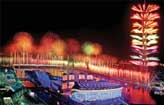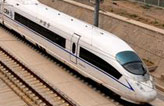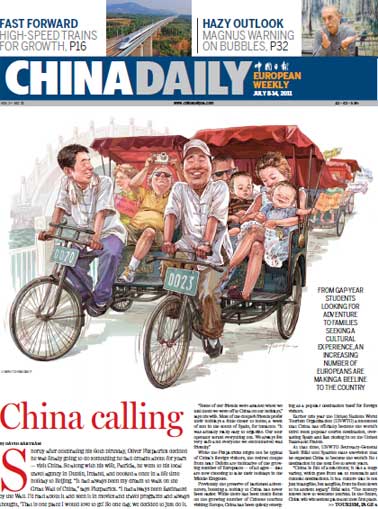Op-Ed Contributors
China needs aircraft carriers
Updated: 2011-07-15 07:38
By Wang Baokun (China Daily)
Since the 1990s, the increasingly unbalanced use of advanced strategic forces like carriers and nuclear weapons by some countries has been undermining peace and slowing down world economic development. Some countries' unilateral actions have more often than not intensified regional conflicts. Once China adds aircraft carriers to its naval fleet, it could act as a counterbalancing force for such countries.
Defense Minister Liang Guanglie has said China cannot be without aircraft carriers forever, especially because of the increasing power struggle in the international arena.
Also, China's 2010 defense white paper emphasized "the People's Liberation Army (PLA) Navy's endeavors to expedite the modernization of its integrated combat forces, enhancement of its capabilities in strategic deterrence and counterattack", and development of its "capabilities in conducting operations in distant waters and in countering non-traditional security threats".
Aircraft carriers can be used as strategic deterrence and to thwart outside interference in regional affairs. As Andrew Erickson, of the US Naval War College, once said, China doesn't want war, but it wants to ensure that any action against its national core interests can be well deterred.
An aircraft carrier is a strategic equipment that indicates a navy's power and depth. Aircraft carries, as well as nuclear weapons, electronics, information technology, cyberspace technology, economic development and preparedness are some of the modern deterrents that can ensure national security.
Also, because of their huge size, advanced equipment, rich reserves and well-trained soldiers, aircraft carriers are highly effective in and capable of providing timely relief to people in the event of disasters, both man-made and natural.
For example, when floods and mudslides hit Thailand in March, affecting about 1 million people and stranding about 15,000 tourists in different places, the Thai government dispatched its only aircraft carrier, with four helicopters, accompanied by three other navy vessels to help relief efforts and evacuate people. And after a deadly earthquake and deadlier tsunami hit Japan on March 11, the US Navy quickly sent its vessels along with nuclear-powered supercarrier USS Ronald Reagan to help Japan in its relief and rescue operations.
The Chinese government and the PLA also use military personnel and equipment to help relief and rescue work in disaster-hit areas. So aircraft carriers can also strengthen China's relief, rescue and evacuation operations and help it better coordinate and execute its plans.
The author is an associate professor at Economic Security and National Defense Economy Institute, School of Economics, Renmin University of China.
(China Daily 07/15/2011 page9)
E-paper

Burning desire
Tradition overrides public safety as fireworks make an explosive comeback
Melody of life
Demystifying Tibet
Bubble worries
Specials

Setting the pace in Turkey
China is building a 158-km high-speed railway in Turkey.

Moving up the IMF ladder
Christine Lagarde has proposed the appointment of Zhu Min to the post of Deputy Managing Director.

90th anniversary of the CPC
The Party has been leading the country and people to prosperity.
